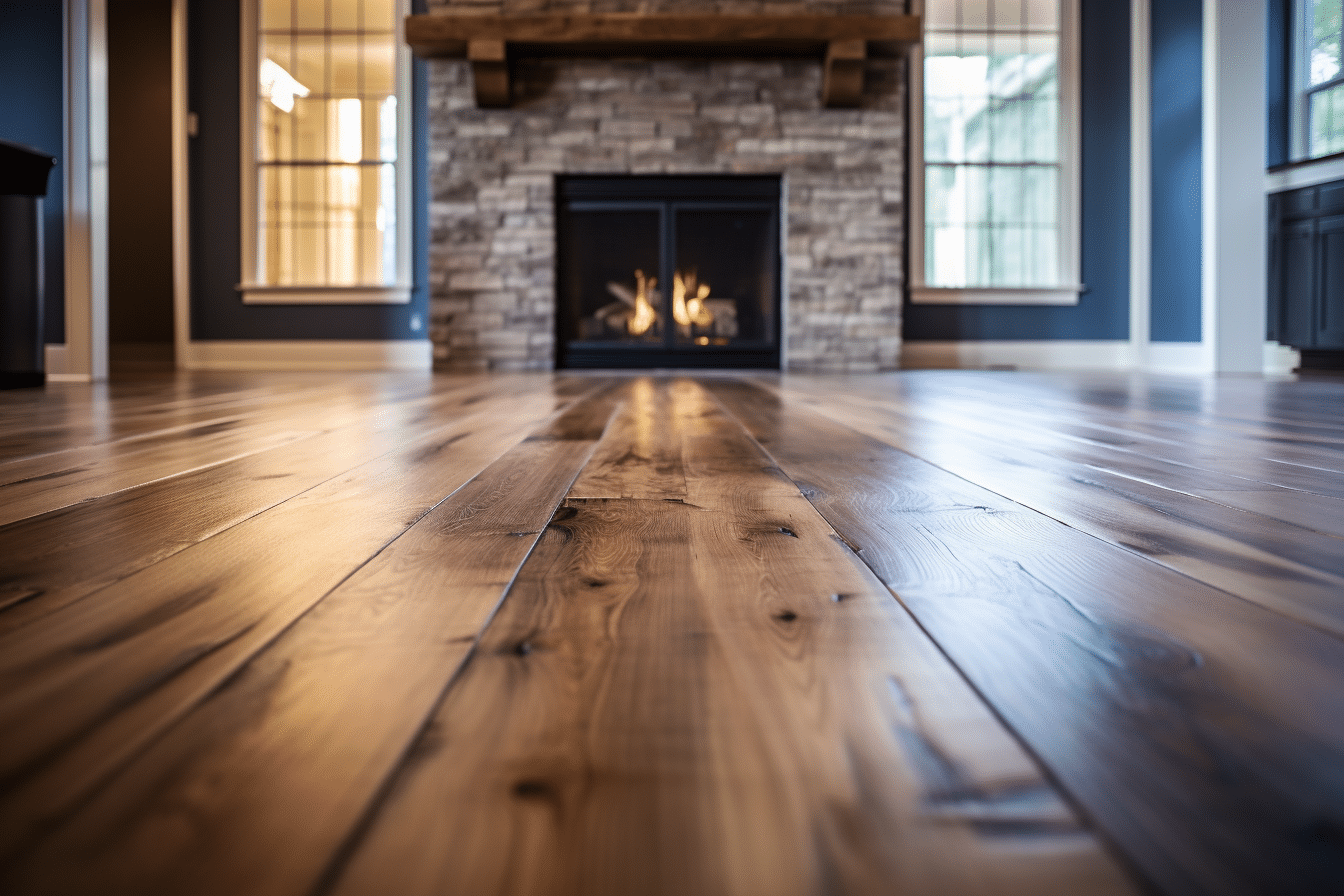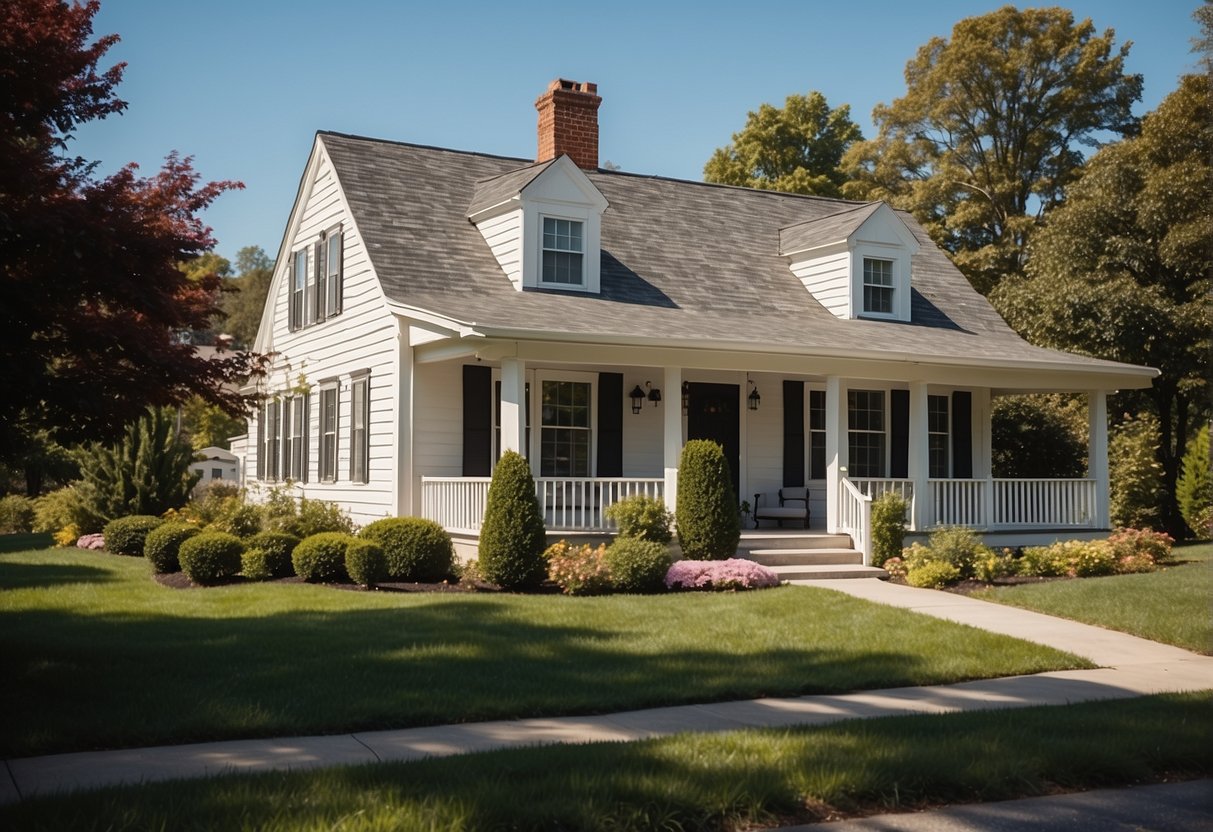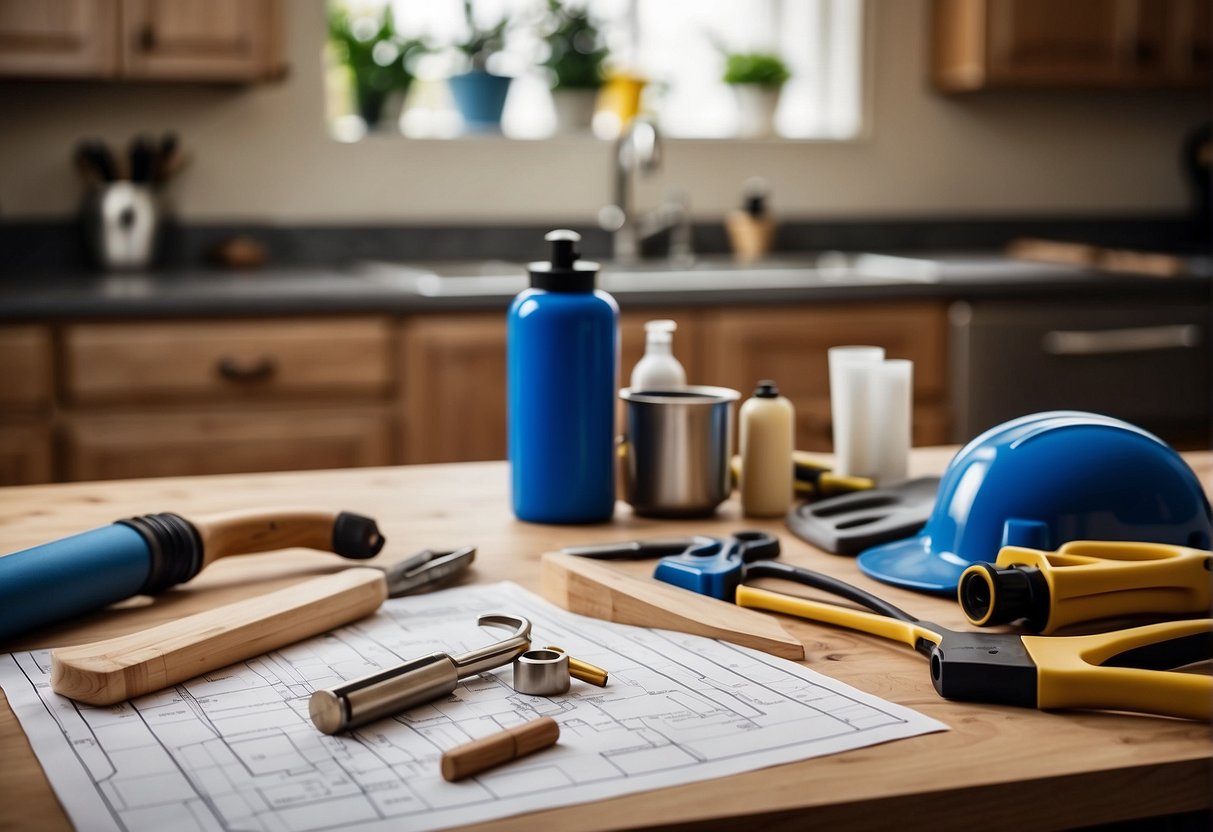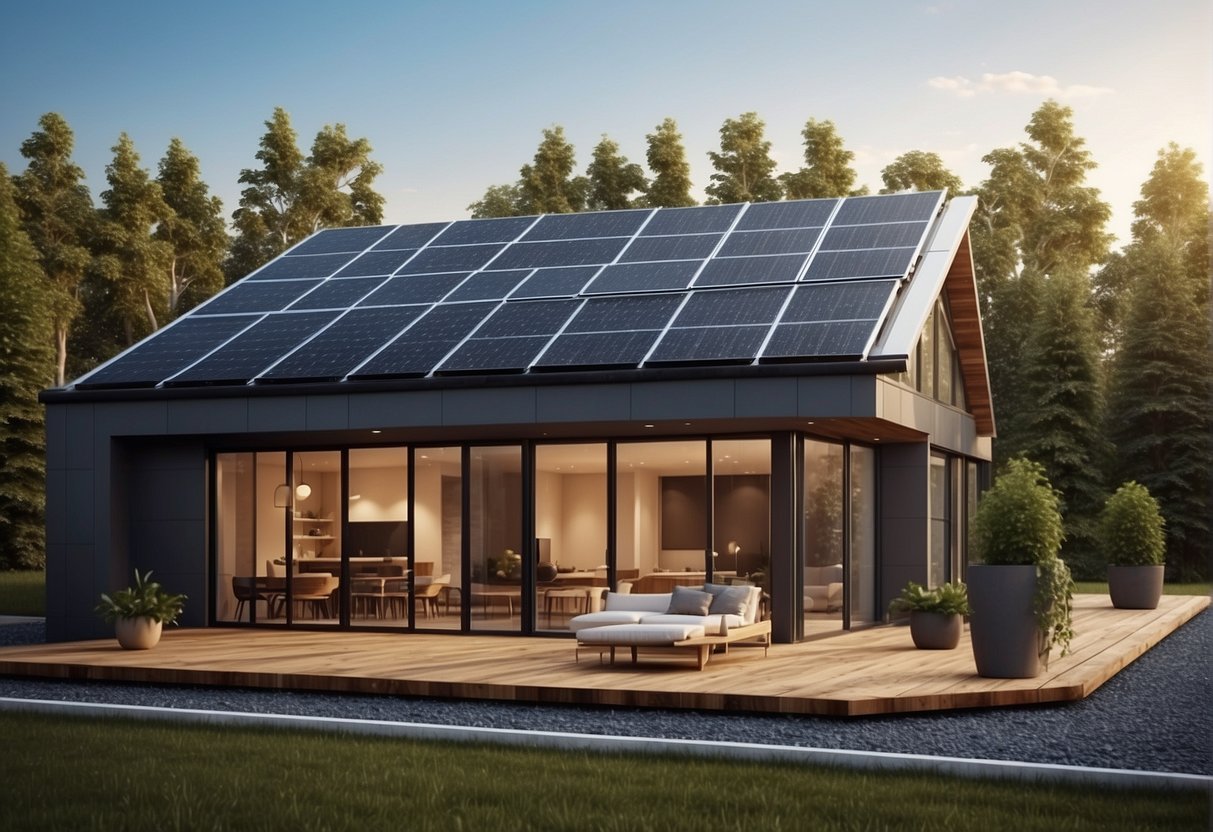
Home Improvement for Resale: Effective Strategies to Maximize Your Property Value
The world of home improvement is vast and varied, with countless projects that can be undertaken to enhance and upgrade your living space. However, not all renovations are equal when it comes to boosting the resale value of your home. Understanding which improvements yield the highest returns is crucial for homeowners looking to maximize their investment.
Data-driven insights, like the 2023 Cost vs. Value Report, hold the key to determining the most profitable home improvement projects. Real estate trends reveal that certain renovations are particularly appealing to buyers, and updated home features can significantly increase your home equity. Focusing on high-impact areas, such as curb appeal and kitchen and bathroom upgrades, can lead to impressive results when preparing your property for sale.
Energy efficiency is another important aspect to consider when planning home improvement projects for resale. With current buyers increasingly concerned about sustainability and eco-friendliness, energy-efficient upgrades, and modernized systems can contribute to boosting your home’s value and attracting offers.
Key Takeaways from Home Improvement for Resale
- Focus on high-impact renovations to boost resale value, such as kitchen and bathroom upgrades.
- Utilize resources like the 2023 Cost vs. Value Report for data-driven improvement strategies.
- Invest in energy-efficient upgrades to meet the demands of environmentally conscious buyers.
Understanding Resale Value
When it comes to home improvement for resale, understanding the potential return on investment (ROI) is crucial for homeowners. Resale value is the amount a home is expected to sell for after completing specific improvements. Factors such as cost vs. value, real estate market trends, and the preferences of potential buyers all impact resale value.
The National Association of Realtors (NAR) and real estate websites like Zillow provide valuable information about what types of home improvements offer the best ROIs. Incorporating data from these sources, homeowners can make informed decisions to maximize the resale value of their homes.
To better understand the concept of cost vs. value, consider these statistics:
- Minor bathroom remodel: estimated 102% return
- Landscaping enhancements: estimated 100% return
- Kitchen updates: estimated 98.5% return
These numbers illustrate that certain projects deliver a higher ROI than others, influenced by market demands and trends. For instance, kitchens and bathrooms are often the most scrutinized spaces by potential buyers, so investing in their updates tends to yield better returns.
In addition to consulting with experts like NAR and Zillow, homeowners should also monitor local market trends to understand which improvements work best in their area. Some location-specific factors might differ substantially from national averages, making it essential to stay informed about regional demands.
Homeowners can also conduct research on potential buyers’ preferences within their specific location. Understanding the target demographic, such as families with young children, can help tailor the improvements to suit their needs and attract more potential buyers.
In summary, understanding resale value is essential to home improvement projects, especially when preparing a property for sale. By leveraging the knowledge of experts, monitoring market trends, and considering potential buyers’ preferences, homeowners can make informed decisions to get the most ROI from their renovations.
Planning Your Home Improvement
Setting a Budget
When it comes to home improvement projects, setting a realistic budget is critical. Consider how much you are willing to invest in your renovation, and keep in mind that you may not recoup all of your expenses when you sell your home. It’s important to strike a balance between what you can afford and what upgrades will provide the best return on investment. For guidance on which home improvements add the most value, refer to this Bankrate article.
Prioritizing Projects
After establishing your budget, it’s time to prioritize your home renovation projects. Focus on upgrades that are most likely to improve your home’s resale value, such as kitchen and bathroom remodels. Create a list of potential improvements and rank them based on your ROI expectations, personal preference, and their overall impact on your home’s functionality and design.
Consider the following priority list as an example:
- Kitchen remodel: updating countertops, cabinetry, appliances
- Bathroom remodel: replacing fixtures, updating tiles, adding storage
- General home improvements: new flooring, painting, landscaping
- Design upgrades: lighting, window treatments, improved layout
Design and Functionality Considerations
Finally, consider striking the right balance between design and functionality when planning your home renovation project. Think about how the upgrades will cater to potential buyers and the trends in your local market. Avoid overly personal choices and aim for designs that appeal to a wider audience.
When making upgrades, keep functionality in mind. For example, in a kitchen remodel, an open-plan layout that maximizes storage space and provides ample countertops will be more desirable than a cramped space with little functionality. Similarly, prioritizing water-saving fixtures and efficient storage solutions in a bathroom remodel can make your home more attractive to potential buyers.
Maximizing Curb Appeal

Landscaping Enhancements
Curb appeal is a crucial aspect of a home’s resale value. One of the most effective ways to improve curb appeal is through landscaping enhancements. A well-maintained lawn and tasteful garden can significantly impact a potential buyer’s perception.
- Lawn Care: Regular mowing, trimming and fertilizing can keep the lawn looking fresh and well-kept.
- Gardening: Planting a mix of seasonal flowers, evergreen shrubs, and trees can create visual interest, provide shade, and promote biodiversity in your yard.
- Walkways and Driveways: Consider pressure washing, resealing, or repaving your walkways and driveway for a clean and polished appearance.
- Outdoor Lighting: Strategically placed lighting can create a welcoming nighttime atmosphere and enhance safety for visitors.
Entryway Upgrades
A home’s entryway sets the tone for visitors’ experiences. Therefore, investing in entryway upgrades is essential for maximizing curb appeal.
- Front Door: A fresh coat of paint or even a new door altogether can make a powerful first impression. Look for options in durable materials like steel or fiberglass. Don’t forget to consider the addition of glass or metal accents for a touch of style.
- House Numbers: Upgrading house numbers with modern, easy-to-read designs can make a big difference in the overall aesthetic of the entryway.
- Light Fixtures: Replace dated outdoor lighting fixtures with elegant and energy-efficient ones to brighten up the entrance.
- Potted Plants: Incorporating attractive potted plants or decorative planters adds life and color to the entryway.
Exterior Painting and Siding
The exterior appearance of a home is essential for leaving a lasting impression on potential buyers. Both painting and siding upgrades can significantly boost curb appeal.
- Exterior Painting: Choose a paint color that complements the neighborhood and is durable enough to withstand external elements. Regular touch-ups, especially around windows and doors, can help maintain a polished look.
- Siding: Opt for a high-quality, low-maintenance siding material such as vinyl or manufactured stone veneer. These materials offer excellent durability and can significantly enhance the appearance of your home’s exterior.
- Garage Door: Replacing or repainting a worn garage door can improve both curb appeal and functionality. Opt for materials and colors that complement the rest of the home’s exterior.
- Trim and Accents: Accentuating architectural features with contrasting trim colors and upgrading railings or columns can make your home stand out from the rest. Be sure to maintain these accents, so they remain in good condition.
Kitchen and Bathroom Renovations

Kitchen Remodel Considerations
When embarking on a kitchen remodel, it’s crucial to focus on aspects that will provide the most significant return on investment. A well-executed renovation can increase a home’s resale value. Consider the following updates to transform the space:
- Cabinets: Replacing or painting old, worn cabinets can make an immediate impact. Opt for high-quality, modern designs to maximize the kitchen’s appeal.
- Appliances: New, energy-efficient appliances are an attractive addition. Stainless steel or other neutral color options fit seamlessly with a variety of kitchen styles.
- Flooring: Durable, easy-to-maintain materials like hardwood or luxury vinyl tile are ideal choices. Consider water-resistant options for added protection.
- Countertops: Quartz or granite countertops are popular due to their durability and aesthetics. Choose a matching backsplash to complete the look.
Keep in mind that a cohesive design and thoughtful layout will ultimately attract more potential buyers.
Bathroom Update Strategies
Bathroom renovations can be just as critical as kitchen updates for increasing a home’s resale value. Consider the following strategies when planning a bathroom renovation:
- Replace old fixtures: Faucets, showerheads, and lighting fixtures can be easily replaced with modern, energy-efficient options to create an updated look.
- Upgrade vanity and countertop: A new vanity, countertop, and sink will make a significant visual impact, giving the bathroom a fresh, contemporary feel.
- Update flooring: Like the kitchen, durable and waterproof flooring materials, like ceramic or porcelain tile, should be prioritized.
- Improve lighting: Proper lighting enhances safety and functionality, while stylish fixtures add visual appeal.
- Add storage: Additional storage solutions, such as built-in shelving or medicine cabinets, make the space more functional and attractive to potential buyers.
By focusing on these key renovation areas, both the kitchen and bathroom spaces will benefit from increased value and appeal, ultimately making the home more attractive to potential buyers.
Fundamentals of Flooring

Choosing the Right Flooring
When planning a home improvement project for resale, selecting the right flooring is essential. Factors to consider when choosing flooring include budget, desired aesthetic, and the room’s function. The three most popular flooring options for renovation projects are hardwood floors, carpet, and tile.
- Hardwood Floors: A timeless and elegant option, hardwood floors are highly sought-after by potential homebuyers. They are durable, easy to maintain, and work well in various spaces, such as living rooms, dining rooms, and bedrooms.
- Carpet: Ideal for bedrooms and playrooms, carpeting adds a cozy and comfortable touch to any space. It is available in various styles, materials, and colors, allowing homeowners to customize the look to match their preferences.
- Tile: Primarily used in kitchens and bathrooms, tile flooring is water-resistant and easy to clean. It comes in numerous materials, such as ceramic, porcelain, and natural stone.
Hardwood Floors Versus Alternatives
Hardwood Floors are considered the gold standard in flooring, as they add significant value to a home and have a long lifespan. However, the installation and materials can be costly. On the other hand, engineered hardwood and laminate flooring are more affordable alternatives that closely resemble real hardwood. Engineered hardwood consists of a hardwood veneer on top of a plywood core, while laminate flooring is a synthetic product.
Here is a comparison table of the three flooring types:
| Flooring Type | Pros | Cons |
|---|---|---|
| Hardwood | Timeless, Durable, Easy to maintain, Adds value | Expensive, Sensitive to moisture |
| Engineered Hardwood | Affordable, Resembles hardwood, Stable | Less durable, Mostly cannot be refinished |
| Laminate | Affordable, Resembles hardwood, Easy to maintain | Less durable, Sensitive to moisture, Less value |
Carpet is another option that can be more budget-friendly and provides a warm, soft feel underfoot. However, it may not be the best choice for allergy sufferers, and it requires more maintenance to keep it looking fresh and clean.
Tile flooring is a practical choice for areas prone to moisture, such as kitchens, bathrooms, and even outdoor spaces. While it can be expensive to install, its durability and low-maintenance nature make it an appealing option for many homeowners.
Energy and Efficiency Upgrades

Insulation and Windows
Insulation plays a crucial role in maintaining a comfortable living environment while promoting energy efficiency. Upgrading insulation, particularly in the attic, can significantly reduce heat loss and keep the home warm during colder months. Common types of insulation include fiberglass, cellulose, and spray foam. It is essential to choose the appropriate R-value – a measure of insulation effectiveness – for your specific region and climate.
Another key area to focus on is window replacement. Old, single-pane windows can significantly impact the home’s overall energy efficiency. Upgrading to double or triple-pane windows with low-emissivity glass will both improve insulation and minimize heat transfer. Additionally, energy-efficient windows may qualify for tax credits, ultimately offsetting a portion of the upgrade’s cost.
Smart Home Technologies
Integrating smart home technologies into your living space can also improve energy efficiency and increase resale value. Some popular options include:
Smart thermostats: These devices learn your daily temperature preferences and adjust them accordingly, optimizing heating and cooling usage.
Tankless water heaters: Unlike traditional water heaters with a storage tank, tankless systems heat water on-demand, reducing the energy consumption associated with maintaining a constant hot water supply.
LED light bulbs: These energy-efficient bulbs consume up to 80% less energy than traditional incandescent bulbs and have a significantly longer lifespan.
Heating and Cooling Systems
Upgrading the heating and cooling equipment in your home is another essential component of energy efficiency improvements. Options to consider include:
| System | Advantages |
|---|---|
| High-efficiency furnace | Increased energy efficiency, reduced utility bills, more even heat distribution |
| Heat pump | Can provide both heating and cooling, highly energy-efficient, able to work in various climates |
| Geothermal system | Uses the earth’s constant temperature for heating and cooling, long lifespan, eco-friendly |
Keep in mind that regular maintenance and proper installation are critical to achieving optimal performance from your upgraded heating and cooling systems.
Preparing for Sale
Staging and Decluttering
To make a home more appealing during the selling process, staging and decluttering are essential. Staging involves showcasing a property’s best features by arranging and decorating it in an inviting manner. Decluttering ensures that potential buyers aren’t distracted by excess belongings and that they can visualize themselves living in the space.
Follow these steps to achieve effective staging and decluttering:
- Remove personal items: Keep family photos, memorabilia, and other personal belongings to a minimum.
- Organize storage: Ensure that closets, cabinets, and shelves are organized and clean.
- Rearrange furniture: Arrange furniture to ensure an open, spacious feel and highlight key features of the rooms.
- Accessorize: Select neutral, eye-catching accessories to improve the home’s overall appearance.
Deep Cleaning Checklist
A thorough deep cleaning is another important aspect of preparing a home for sale. It encompasses detail-oriented tasks that go beyond regular cleaning and maintenance. The following checklist provides an overview of areas to focus on during a deep clean:
- Floors: Vacuum, mop, and polish hardwood floors. Deep clean carpets and rugs.
- Walls: Wash walls, especially in high-traffic areas, and touch up or repaint if necessary.
- Windows: Clean windows, both inside and out, to ensure a clear view and natural light.
- Kitchen surfaces: Scrub countertops, sinks, and backsplashes; clean appliances inside and out.
- Bathrooms: Clean and sanitize showers, tubs, sinks, and toilets; remove any visible mold or mildew.
- Plumbing fixtures: Descale faucets, showerheads, and other fixtures, and make sure they’re functioning properly.
Safety Considerations
Prioritizing safety is crucial when preparing a home for sale. Potential buyers want to feel secure in their new home, so it’s important to address any safety concerns before listing the property. Some key safety improvements to consider include:
- Smoke and carbon monoxide detectors: Install or replace detectors to ensure they’re functioning properly.
- Electrical issues: Check for frayed or exposed wires, faulty switches, or overloaded outlets. Hire an electrician if needed.
- Staircase safety: Tighten any loose railings and make sure stairs are well-lit and free of obstacles.
- Mold and mildew: Inspect for signs of mold and mildew and address the problem with professional help if necessary.
In summary, preparing a home for sale involves careful staging, decluttering, deep cleaning, and addressing safety concerns. By paying attention to these aspects, sellers can increase their chances of receiving competitive offers and closing a successful sale.
Cost Versus Value Analysis
Understanding the Report
Cost versus value analysis is crucial when it comes to home improvements for resale. By evaluating the return on investment (ROI) that each project might yield, homeowners can make informed decisions about which upgrades will enhance their property’s resale value. Reports like the 2023 Cost vs. Value Report by the National Association of Realtors can provide valuable insights into the most profitable home improvement projects.
Best Value Projects
To help homeowners prioritize their home improvement projects, the following list highlights some of the best value projects in terms of return on investment, according to the 2023 Cost vs. Value Report:
- Minor Kitchen Remodel: A well-done kitchen remodel can yield impressive ROIs as buyers often prioritize updated kitchens when looking for homes.
- Deck Addition: Adding a wooden or composite deck to your home can enhance its appeal and provide a solid return on investment.
- Siding Replacement: Upgrading your home’s siding can increase curb appeal while also improving energy efficiency, leading to a higher resale value.
Avoiding Overinvestment
Although certain home improvements can boost a property’s resale value, it’s essential to avoid overinvestment. Overinvesting refers to spending too much on a project, resulting in a potential loss when the house is eventually sold. Here are some tips to prevent overinvestment:
- Research your local market: Understand the preferences and expectations of buyers in your area. High-end upgrades might make sense in luxury markets but could fall flat in more modest neighborhoods.
- Consult with a professional: Real estate agents or appraisers can provide valuable advice on the most appropriate improvements to your property, given its current value and features.
- Weigh your options: Compare the potential benefits of various projects, considering not only the financial ROI but also the intangible value they might bring, such as increased enjoyment and functionality of your home before resale.
In conclusion, homeowners must carry out a thorough cost versus value analysis before undertaking home improvement projects aimed at boosting resale value. Utilize resources like the 2023 Cost vs. Value Report and seek professional advice to ensure wise investments into your property.
Luxury Specialist at McGraw Realtors
With a diverse background, including a career as an Air Force fighter pilot and entrepreneurship, Bill transitioned to real estate in 1995. Co-founding Paradigm Realty with his wife, Charlene, he quickly rose to prominence in Oklahoma City’s luxury real estate scene. Now, as one of the top agents with annual sales surpassing $20 million, Bill’s dedication to exceptional service remains unparalleled. With a legacy spanning over two decades in the industry, Bill’s expertise and commitment make him a trusted name in luxury real estate.